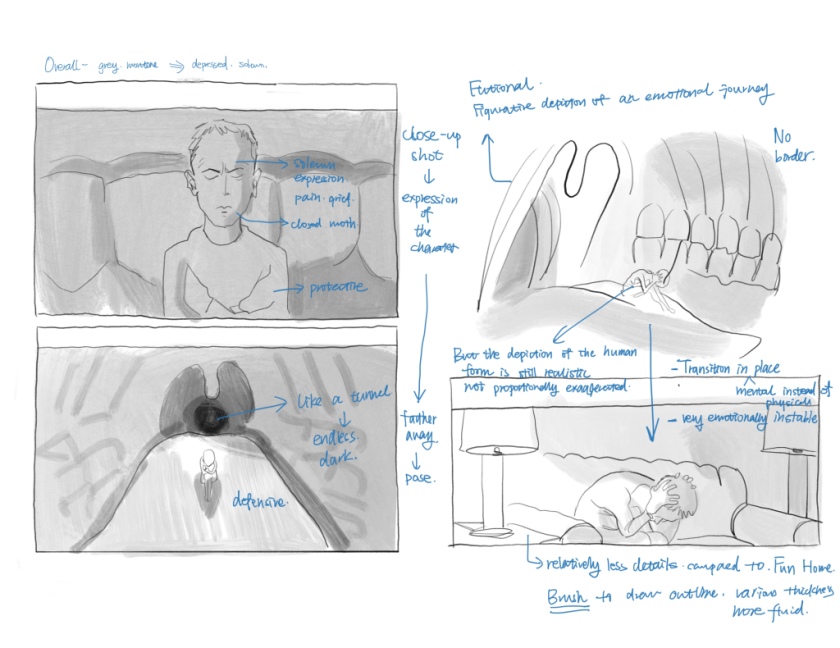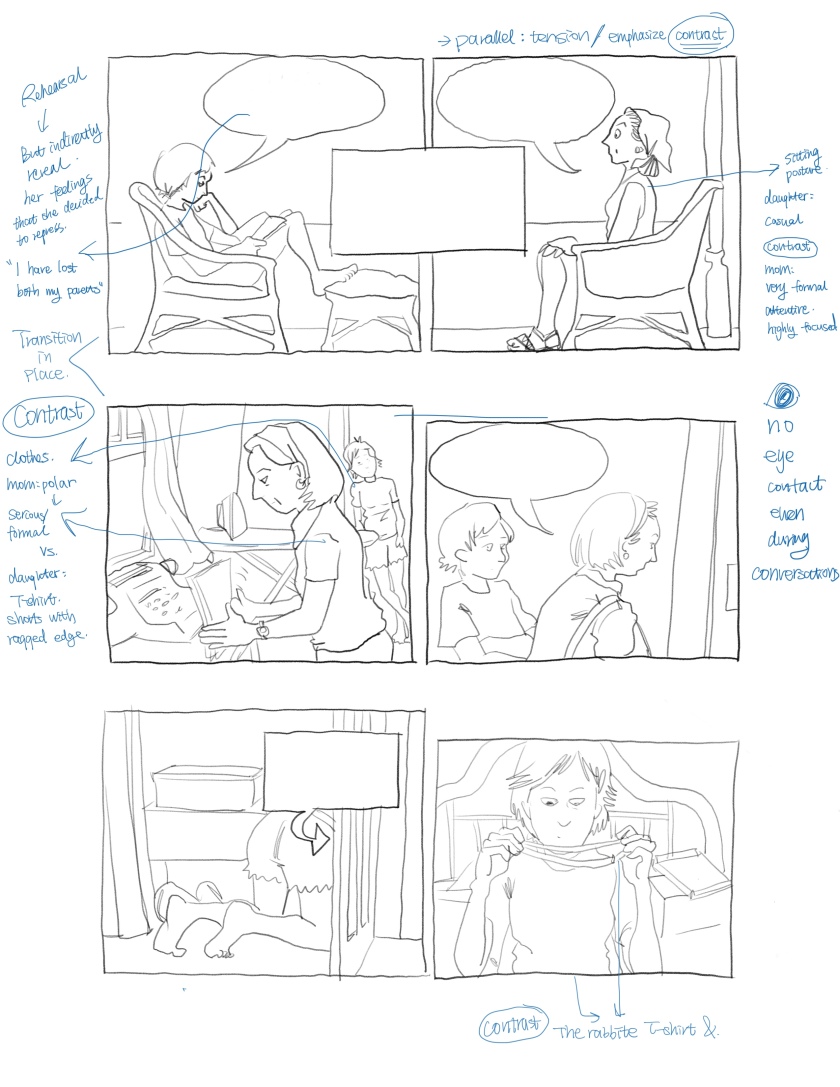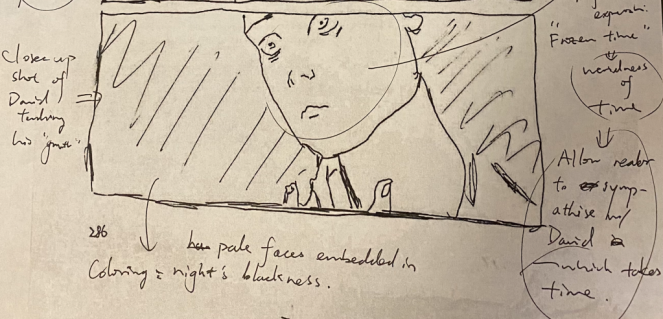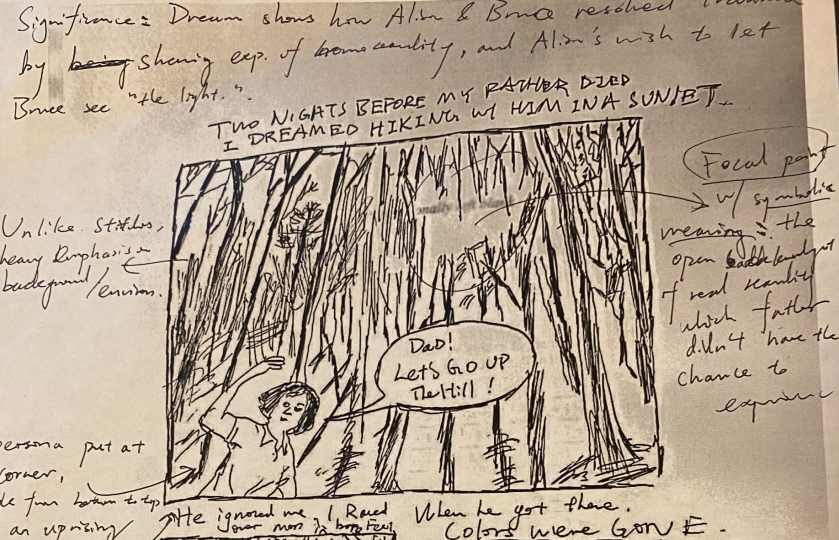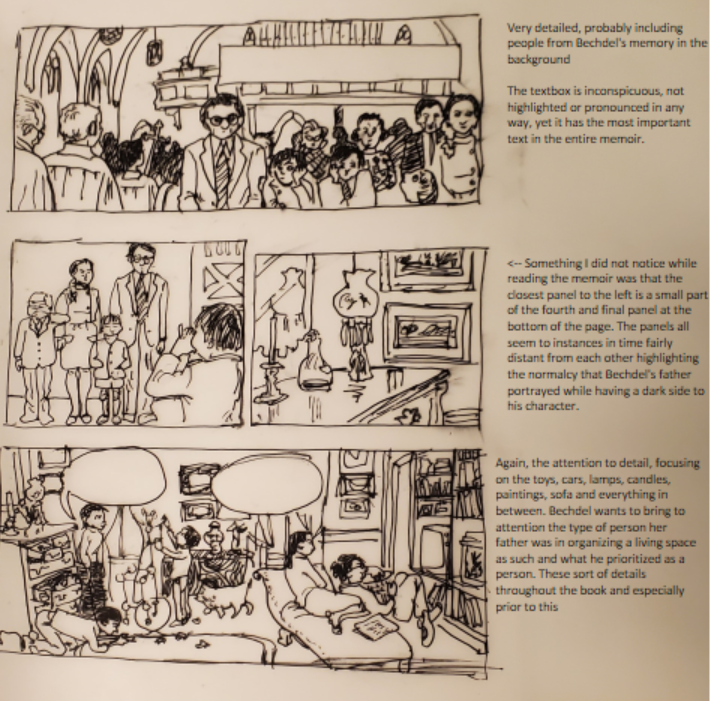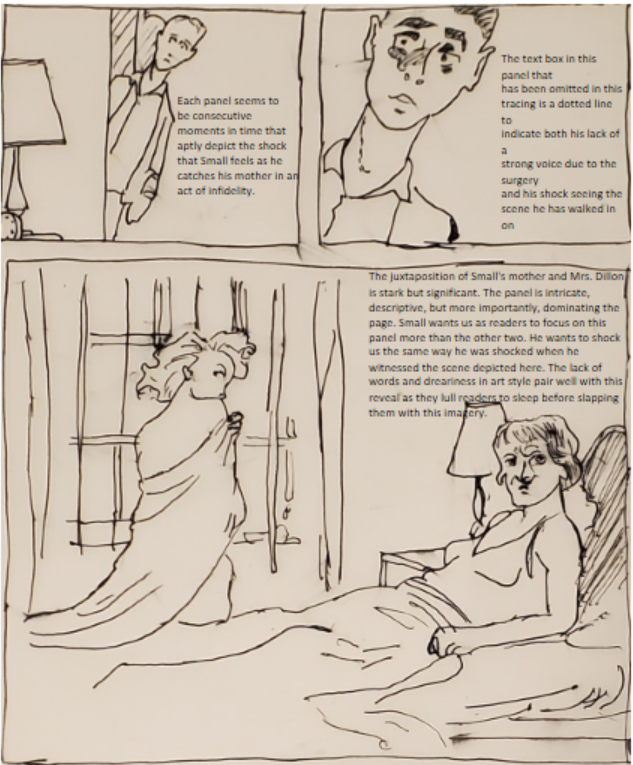Reflection: Tracing Pages
The process of tracing and annotating allows me to dive into the images and recognize the details that got ignored when I was reading the comics at a normal pace. For instance, it allows me to realize the effort Bechdel put into depicting all the details of surroundings in her room: the clothes in the closet, the curtain beside the desk, or even the labels on the cupboard boxes, all of which contribute to enhance a sense of realism. The details also reflect lots of unobvious contrasts: like the different dressing styles of mother and daughter which are reflective of their diverging personalities. For Stitches, it made me notice that the author employed different shades of grey intentionally to emphasize his feelings of depression through the use of shadows on certain areas. Through shadows, he’s actually creating different lighting effects that help to establish the atmosphere.
Initially, I was struggling to organize my ideas into an ABT structure because all the patterns I was planning to analyze point to one general conclusion, so it may easily become an essay with three parallel body paragraphs. So I spent some time reorganizing my thoughts, trying to find if there exists a progressive argument that allows me to gradually dive deeper into my analysis instead of presenting a general rule in the opening paragraph and using all the other paragraphs to prove it. Eventually, I decided to have two body paragraphs, one on visuals and the other on texts, but I will save my concluding remarks to the end which enables me to gradually unfold my arguments.
The title of my essay is “the hidden storyteller”, which resonates well with the focus of the course “secret language of comics.” The process of slowing down and reading one page for several times significantly enhanced my understanding of the comics, and it was during the process of writing about them and comparing the two comics that I was able to notice the patterns I ignored. For instance, after I decided to focus on the representation of emotions in both comics, I began to notice the various ways employed by the two authors that are reflective of how they dealt with emotions. Especially for Fun Home, it was through comparing it with Stitches that I realized how emotionally detached it is. It feels like a documentary of the past, and the narrator is trying to explain it, interpret it, and reflect on it by analyzing herself. On the other hand, Stitches is sentimental, passionate, the emotions are powerful.

